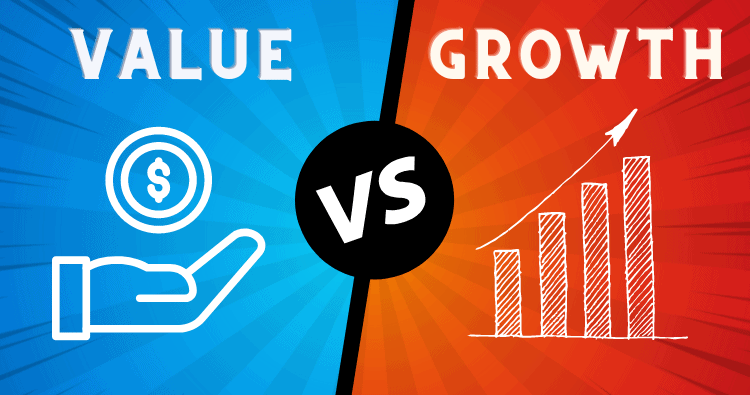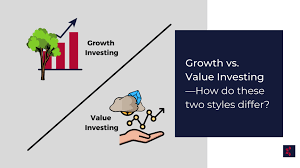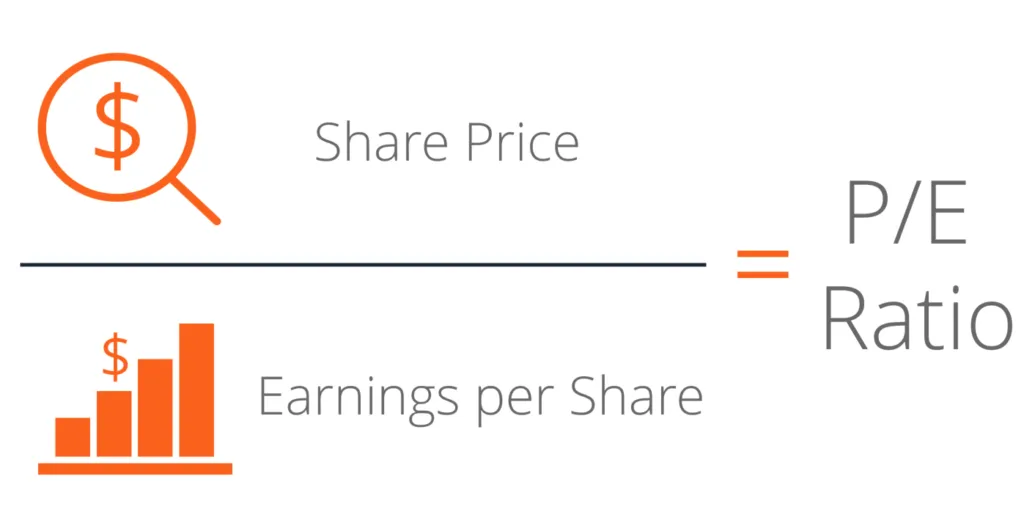Growth Stocks vs Value Stocks: Navigating the Path to Prosperity
In the clash of Growth stocks vs value stocks, each has champions and critics. But what really sets them apart and how do you cash in on their unique paths to wealth? As a seasoned investor, I’ll take you through the nuts and bolts of these two very different strategies. I’ll show you how the high-speed lane of growth investing aims for the stars, with stocks that promise rapid expansion. Meanwhile, value investing roots around for market underdogs, banking on their comebacks for solid gains. Get ready to dive into the financial trenches and arm yourself with the insights you need to build your fortune.
Understanding the Fundamentals of Growth and Value Investing
The Principles of Growth Investing
We’re talking about growing money here, just like planting a seed and watching it shoot up. With growth stocks, we aim for companies that look like they’ll get big, fast. Think of tech companies that have just come up with something super cool that everyone might want. Their prices can climb quick as more people want a piece of their future.
Growth investing is about finding these gems. You don’t get much in dividends now because these companies reinvest profits. But you could sell your shares later for way more than you paid if all goes well. What you need is patience and a good eye for what’s hot and what’s not.
The Core Concepts of Value Investing
Now, let’s switch gears. Value investing is pretty much bargain hunting on the stock market. We’re after strong companies whose stock prices seem too low. Price matters, but think of it as looking for a sturdy house in need of paint rather than one that’s shiny but shoddy.
With value stocks, you’re banking on the long game. These companies often pay steady dividends, giving you cash while you wait for the market to price the stock properly. Financial basics matter a ton here. You’ll look at PE ratios and book values to dig out those deals.
This style comes from the smart ideas of a guy named Benjamin Graham. Often, value stocks are less of a wild ride than growth stocks. Less up and down means you might sleep better at night, especially if market thrill rides aren’t your thing.
So, which is better? It depends on you. Are you a risk-taker chasing big wins? Then growth might be your lane. Or are you someone who loves a solid deal and patience pays? Consider value investing. No matter what, remember investing is a journey—no quick race to the cash.
Analyzing Market Trends and Financial Metrics
Interpreting Financial Ratios for Stock Analysis
In stock analysis, we look at numbers a lot. These numbers tell us stories about companies, like how healthy they are, if they’re growing, and if they’re risky bets. One number we look at is the PE ratio. “What is a PE ratio?” you might ask. The PE ratio shows us how much money you’re paying for each dollar of a company’s earnings. It’s like checking the price tag on a toy. If the price tag is high, you’re paying more for that toy’s promise of fun.
With stocks, a high PE ratio can mean the stock is expensive compared to its earnings. People might bet that the company will grow a lot. Now, not all pricey stocks are bad, but you have to think: will this company really grow as much as people think? If yes, it might be worth it. If no, then maybe it’s not such a good deal.
We also look at another number called “price to book value.” This is like figuring out if you’re getting a good deal on a used car by comparing its price to what it’s actually worth. If the number is low, you might be finding a hidden gem. If it’s high, the stock might be more hype than substance.
Earnings Growth vs. Dividend Yields: Assessing Their Influence
Now, let’s talk about how much money a company makes, which we call earnings growth, and dividend yields. Earnings growth is all about watching a company make more money over time. Think of a lemonade stand: if it starts making more money each week, that’s like earnings growth. If you buy shares in that lemonade stand, you want to see those earnings go up because it means the business is doing well.
On the other hand, dividend yields are about how much cash you get just for owning stock. If that lemonade stand gives you some of its earnings just for being a part-owner, that’s what a dividend is like. A big dividend can be really nice because it’s money in your pocket. But don’t get too carried away. Big dividends are great, but only if the company can keep paying them without trouble.
In short, you want to find companies with solid earnings growth and nice dividends. This balance can lead to a happy ending for your investment story. Remember, though, there’s always risk. All those numbers and trends we look at? They help us make smart guesses, but they’re still just guesses. The trick is to be smart about which numbers you trust and to always keep an eye on the bigger picture—the health and growth of the companies you invest in.
Remember, stocks are not just numbers on a screen; they represent real businesses with real stories. By understanding the financial ratios and what they suggest about a company’s future, you can make more informed decisions that might just lead to prosperous results.
Investment Strategies: Growth vs. Value
Growth Stock Investment Strategies and Rispects
Let me take you on a trip through the world of growth stocks. Think of companies that are the talk of the town. They shoot for the stars and grow fast. Buying their stocks means you’re hoping for big gains. But remember, with big potential comes big risk. These stocks often swing high and low in price. That’s what we call tech stock volatility. You’re in for a ride with these.
When eyeballing a growth stock, focus on the earnings growth. We want this number going up, because it often leads to the stock price jumping too. But don’t just look at today’s growth. Peek forward. Try to see where they might stand tomorrow, or the next year even.
The risks? Well, these stocks don’t love bad news. One slip, and prices might drop hard. And they often don’t pay dividends. So, if you like cash flow, this could be a hitch.
The Basics of Value Investing: Finding Undervalued Stocks
Now, let’s talk about value investing. We’re digging for treasure here. Value investing is about finding stocks selling for less than they’re worth. It’s like finding a designer jacket at a yard sale price.
We use financial ratios for stock analysis here. The PE ratio tells us if the stock might be a deal. A low PE ratio can mean the stock is on sale. The price to book value helps too. Think of it as what you’d get if the company sold everything today. Buying for less than that? Score!
Value stocks are often solid, like blue-chip stocks. These are your long-term plays. They won’t jump overnight but they’re steady. And they often pay dividends. That’s money in your pocket while you wait.
We’re also talking about mature company profits here. These firms have been around the block. They might not grow as fast, but they know how to earn. This makes them less risky, usually.
Still, the market might doubt them. They’re like the old dog that learns a new trick. It’s surprising, and it might take time for others to notice.
So, which is better? That’s the golden question. Growth stocks offer thrills and spills, and value stocks bring a steady hand to your portfolio. It’s like comparing a sprinter to a marathon runner. Each has its place. A blend might be the spice your investment recipe needs.
Remember, we’re after long-term investments with a buy and hold strategy. Whether we fancy growth or value, or a mix, we stick to the plan. We’re not about short-term gains, or trying to time the market. That’s a risky business.
All in all, know your path. Assess your appetite for risk, and let’s pick stocks that march to your drum. Whether it’s striking gold with a growth gem or cozying up with a trusty value pick, your strategy should light up your financial future.
Portfolio Construction and Management
The Role of Diversification in Managing Investment Risk
You hear it all the time: “Don’t put all your eggs in one basket.” That’s diversification. It’s a key tactic to manage risk in your investments. It mixes a wide range of stocks in your portfolio. This blend often includes both growth and value stocks.
Growth stocks are like seeds with potential to become big trees. They’re from companies expected to grow at an above-average rate. But they also carry higher risk. If the company fails to grow, the stock could tank. Value stocks, on the other hand, are like undiscovered gems. They are stocks that trade for less than they’re really worth. Finding these lets you buy low and, ideally, sell high.
Diversification is like having a garden with both. When growth stocks soar, they can boost your portfolio. When the market dips, value stocks can help steady it. By having both, you steady your investment ship in both smooth and choppy waters.
Navigating Entry Points and Exit Strategies for Securities Trading
Knowing when to buy or sell stocks is crucial. It’s like jumping on a moving merry-go-round. An entry point is a good time to buy a stock. You look for signs, like low prices for value stocks or high growth for growth stocks. This can signal a good time to invest.
An exit strategy is your plan for selling. You need one to avoid losing money when things go south. It’s like having an escape path if the garden has too many weeds. Maybe you sell when a stock hits a certain price. Or you might sell if your reasons for investing change. Keeping an eye on stock market trends helps a lot with this.
So, to sum up: diversify to spread risk and have a plan for when to get in and out. This can help you hold a steady course toward reaching your investment goals.
In this post, we dove into growth and value investing, breaking down their core principles and concepts. We peeled back the layers of market trends and looked at the crucial role financials play in stock analysis. We also compared the strategies and risks linked with growth stocks against the hunt for undervalued gems in value investing.
We wrapped up by tackling how to build a strong portfolio and manage risks through smart diversification. Plus, we mapped out when to buy in and when to step out of trades.
So, what’s the takeaway? Whether you lean towards the potential high flyers of growth investing or the hidden treasures of value investing, the key lies in knowing the difference and finding your comfort zone. Smart choices, guided by solid research and a firm grasp on market signals, will help you build a portfolio that can stand the test of time. Keep your eye on the prize and invest wisely!
Q&A :
What are the key differences between growth and value stocks?
Growth stocks are typically associated with companies that exhibit high potential for growth in revenue and earnings. Investors are drawn to these stocks due to the businesses’ potential to generate significant profits in the future, which can lead to substantial stock price increases. Conversely, value stocks are often companies that are considered undervalued in the market. These stocks have more stable performances and are commonly characterized by their lower price-to-earnings ratios and higher dividend yields. The expectation with value stocks is that the market will eventually realize their intrinsic worth, leading to an appreciation in their stock price.
How do growth stocks perform compared to value stocks during different market cycles?
The performance of growth and value stocks typically varies with different market cycles. During bull markets or periods of economic expansion, growth stocks often outperform value stocks due to their rapidly increasing earnings and the market’s risk-on sentiment. On the other hand, during bear markets or periods of economic contraction, value stocks tend to be more resilient. Their perceived undervaluation and stable earnings can provide a level of protection against market downturns, whereas growth stocks might be more vulnerable due to their higher valuations and growth prospects being questioned.
What are the risks associated with investing in growth stocks versus value stocks?
Investing in growth stocks carries the risk of volatility and significant price corrections if the companies fail to meet growth expectations, as they are often priced for perfection. Since growth stocks typically offer lower or no dividend payouts, any return on investment is principally dependent on stock price appreciation, which can be uncertain. In contrast, value stocks can also carry risks, such as the possibility of the stocks being undervalued due to fundamental issues within the companies that may not be easily resolved. Additionally, value stocks may remain undervalued for prolonged periods, causing opportunity costs for investors.
Which investment strategy is better: growth investing or value investing?
The decision between growth investing and value investing depends on individual investor goals, risk tolerance, and investment horizon. Growth investing might be more suitable for investors who are seeking higher returns and have a longer time frame to ride out volatility. These investors must also be comfortable with the high valuation risks associated with growth stocks. Alternatively, value investing could appeal to conservative investors seeking undervalued stocks that potentially offer a margin of safety and steady dividends. Often, a combination of growth and value investing strategies might be employed in a diversified portfolio to balance risk and returns across different market conditions.
Do growth and value stocks react differently to interest rate changes?
Yes, growth and value stocks often react differently to interest rate changes. Generally, growth stocks can be more sensitive to rising interest rates. This is because their valuations are heavily based on future earnings, which are discounted more deeply when rates go up, making these stocks less attractive. Additionally, growth companies often rely on external financing, and higher rates can increase borrowing costs, curtailing their growth. On the flip side, value stocks may not be as affected by rising rates due to their already lower valuations and less reliance on debt. In some cases, certain value stocks may even benefit from rising rates, particularly if they operate in sectors like financials, which can profit from a higher rate environment.



